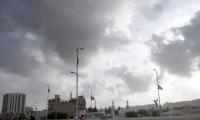ISLAMABAD: The Ministry of Energy Petroleum Division Friday issued a press release, clarifying its position regarding reports, circulating in the print and electronic media, posing serious questions about the LNG import “based on selected data”.
The release said the Petroleum Division would like to respond to the questions in the backdrop of legal and contractual issue of LNG import.
The first question, said the release, is asked whether the government not buying more LNG. In this regard, one must know that since LNG is not “gas” as per law, the government can only buy more LNG when confirmed buyers are available, who will pay the full price. Otherwise, it will create an LNG circular debt. All LNG contracts are under ‘Take or Pay’ rule, said the release adding that when a spot cargo is procured, it becomes ‘Take or Pay’. Each cargo is approximately $25 million in value. Using financial prudence, the government is buying additional volumes, above 800mmcfd of prior contracts, based on demand from consumers, who are prepared to pay the full price. This includes power, CNG and portion of industrial demand. Buying more without ability to recover the full cost would be reckless.
The second question, according to the release, pertains to construction of more LNG terminals. It clarified that the terminals generally run near capacity; in the last 27 months since the present government took office during winter and summer, there have been 9 months where the total LNG demand has been 800mmcfd or less. In the last four years, the Government of Pakistan (and therefore customers) has paid billions of rupees in charges for unutilised capacity. If the present government were to build more terminals on the same financial model, much larger amounts will be paid out of public money that will go waste. Instead, the present government opened up the sector to private investors and gave permissions to all who applied, with no financial commitment on the part of the government. Two of these companies are moving forward and one is likely to break ground within 2 months, with the other to follow shortly thereafter.
The third question was being asked that why the government did not sign more long-term LNG contracts. It must be understood that the government has to ensure that it could sell the full 800mmcfd every month before it could commit to more long-term contracts. When the projections will show that the country has firm demand exceeding 800mmcfd on a consistent basis, only then the government will consider signing more long-term agreements. Otherwise, it will be releasing LNG in the air.
Fourth question was that why more LNG was not bought in summer 2020 for the winter demand, so that the country could have saved billions. The power division said that spot cargoes were prepared for delivery (i.e. within 30-60 days). Whereas in forward buying (i.e. order today for delivery much later), the pricing for such purchases is being undertaken on a forward curve for Brent and Swap Spreads for slope. So, if spot cargoes were available in July for 10% of Brent, resulting in $4/mmbtu delivered price, an order placed in July for delivery in December does not get priced at $4/mmbtu. The sellers will use forward projections of Brent in December and Swaps Spreads for slope in December, resulting in a much higher price for delivery in December. An expectation that we can get ready price of summer for delayed delivery in winter is totally wrong.
Fifth question was regarding recent LNG spot purchases by the Pakistani government for December, it must be known that the global demand of LNG goes up dramatically in winter compared to summer. It is a natural phenomenon that summer spot prices are lower and winter prices are higher. Even ignoring the current winter season, the range of spot prices we have seen in our tenders in the last one year spanning a winter and a summer has been at a slope of as low as 5.8% and as high as 15.78%. It must be noted that from Sep 2018 to November 2020, a total of 35 spot cargoes were bought by Pakistan, with an average spread of 10.4% of Brent compared to 13.37% of Brent old contracts. Even if the high of December 2020 is added, the spot average still come to only 11.3% and this average will go down after January 2021.
The sixth question was about why was enough LNG not ordered in summer resulting in two extra cargoes being ordered, it is pertinent to mention here that spot cargoes are ordered once firm demand is available to PLL showing the need for going above 800mmcfd, as explained above. The PPRA rules followed in routine require approximately 75 days procurement process. On occasion, if an emergency cargo is needed, the process is shortened, again staying within PPRA Rules. On account of COVID-19, a lot of industry was shutdown and electricity demand was low in the middle of summer. The PLL ordered enough LNG based on the demand placed with it. When lockdown restrictions were eased, the economy had a V shaped recovery and the demand picked up rapidly. When additional demand was placed, emergency tenders were arranged to procure the LNG.
The seventh question was on priority of RFO on LNG alleging the Government for not being provided cheap LNG to NTDC, resulting in them running some plants on high cost RFO. The division clarified that as far Karachi Electric, ECC allocated them 190mmcfd of gas in April 2018. Gas allocations to power and fertilizer require specific identification of the source. However, in a typical style of previous government, an allocation was made without identifying where this additional gas would come from, or who would be cutoff, or even ensuring an agreement for the supply. The SSGC has been providing gas to KE on an ‘As Available’ basis. When load shedding hit the city of Karachi in summer 2020, and KE did not have enough RFO in stock which it is required to do, some LNG ordered for NTDC was diverted to KE through SSGC’s system. This resulted in replacement of that capacity in the NTDC system with RFO for about two months until the emergency cargoes of LNG were delivered. As of end of November, the total generation on RFO in the NTDC system in 11 months is less than 3.5% of total generation.
A representational image of an ambulance. — State Media/FileMANSEHRA: Two students were killed when a speeding car...
A representational image of protesters holding a street demonstration. — X@NDM_Official/FilePESHAWAR: The...
This representational image shows a police official guiding an ambulance on the road in KP. — AFP/FilePESHAWAR: Five...
Commissioner Kohat Division Syed Motasim Billah Shah looks on in a meeting on June 27, 2024. — Facebook@Motasim...
Shaheed Benazir Bhutto University Upper Dir faculty members attend a training programme on December 21, 2024. —...







